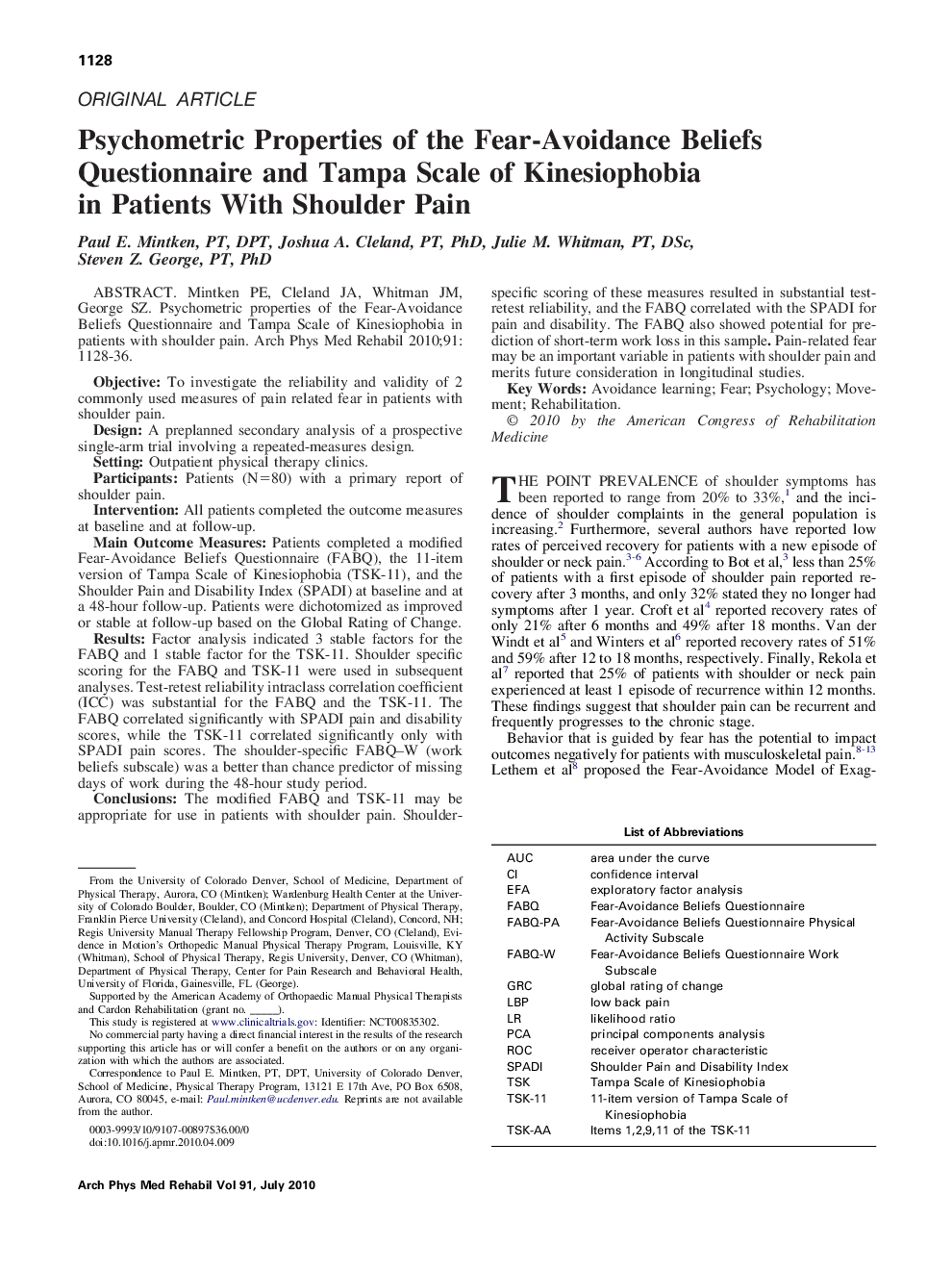| Article ID | Journal | Published Year | Pages | File Type |
|---|---|---|---|---|
| 3451057 | Archives of Physical Medicine and Rehabilitation | 2010 | 9 Pages |
Mintken PE, Cleland JA, Whitman JM, George SZ. Psychometric properties of the Fear-Avoidance Beliefs Questionnaire and Tampa Scale of Kinesiophobia in patients with shoulder pain.ObjectiveTo investigate the reliability and validity of 2 commonly used measures of pain related fear in patients with shoulder pain.DesignA preplanned secondary analysis of a prospective single-arm trial involving a repeated-measures design.SettingOutpatient physical therapy clinics.ParticipantsPatients (N=80) with a primary report of shoulder pain.InterventionAll patients completed the outcome measures at baseline and at follow-up.Main Outcome MeasuresPatients completed a modified Fear-Avoidance Beliefs Questionnaire (FABQ), the 11-item version of Tampa Scale of Kinesiophobia (TSK-11), and the Shoulder Pain and Disability Index (SPADI) at baseline and at a 48-hour follow-up. Patients were dichotomized as improved or stable at follow-up based on the Global Rating of Change.ResultsFactor analysis indicated 3 stable factors for the FABQ and 1 stable factor for the TSK-11. Shoulder specific scoring for the FABQ and TSK-11 were used in subsequent analyses. Test-retest reliability intraclass correlation coefficient (ICC) was substantial for the FABQ and the TSK-11. The FABQ correlated significantly with SPADI pain and disability scores, while the TSK-11 correlated significantly only with SPADI pain scores. The shoulder-specific FABQ–W (work beliefs subscale) was a better than chance predictor of missing days of work during the 48-hour study period.ConclusionsThe modified FABQ and TSK-11 may be appropriate for use in patients with shoulder pain. Shoulder-specific scoring of these measures resulted in substantial test-retest reliability, and the FABQ correlated with the SPADI for pain and disability. The FABQ also showed potential for prediction of short-term work loss in this sample. Pain-related fear may be an important variable in patients with shoulder pain and merits future consideration in longitudinal studies.
